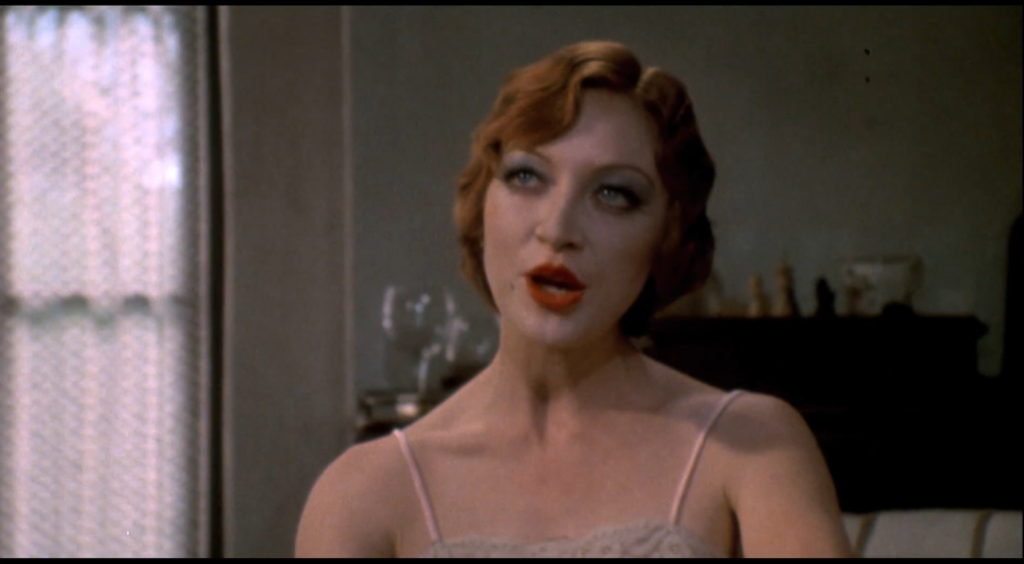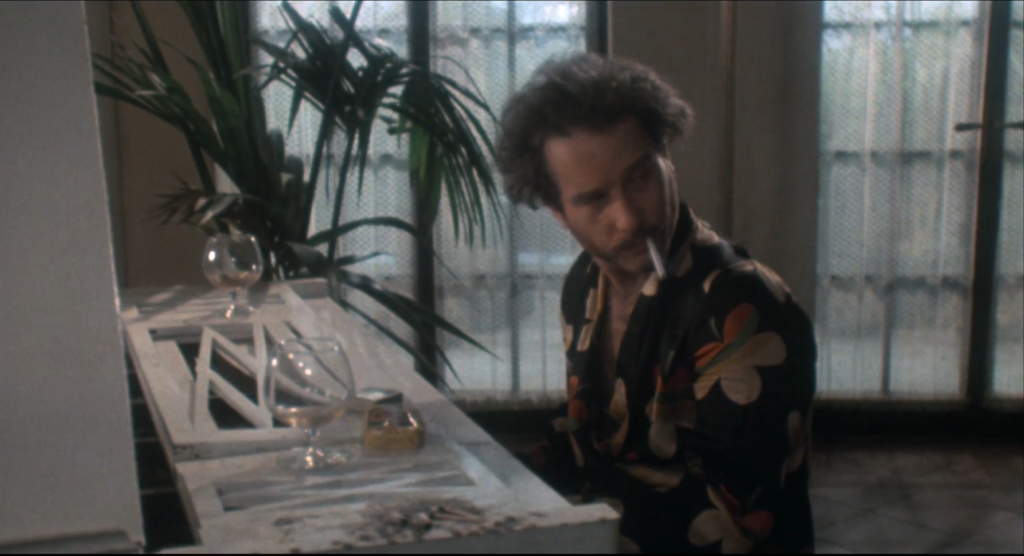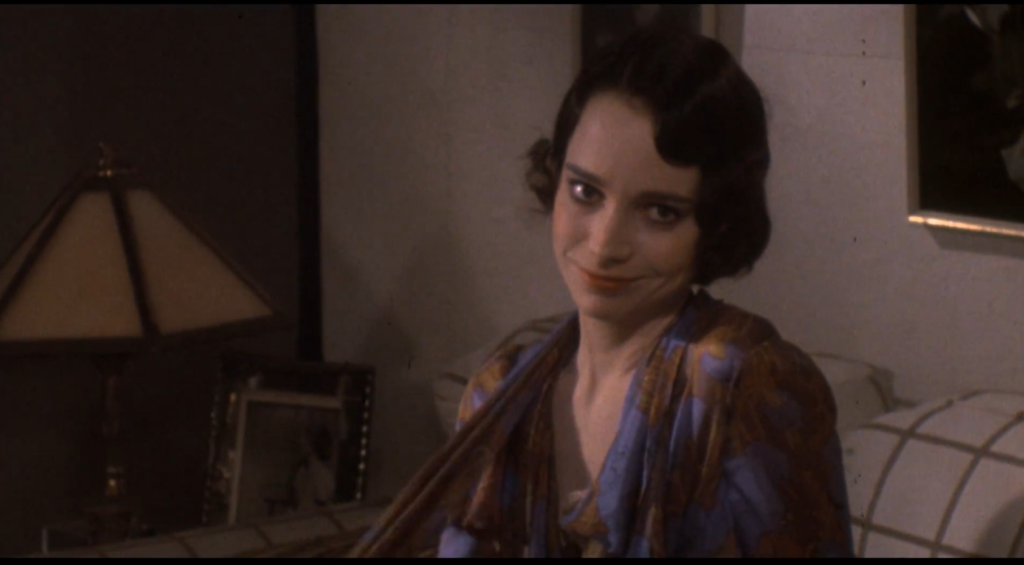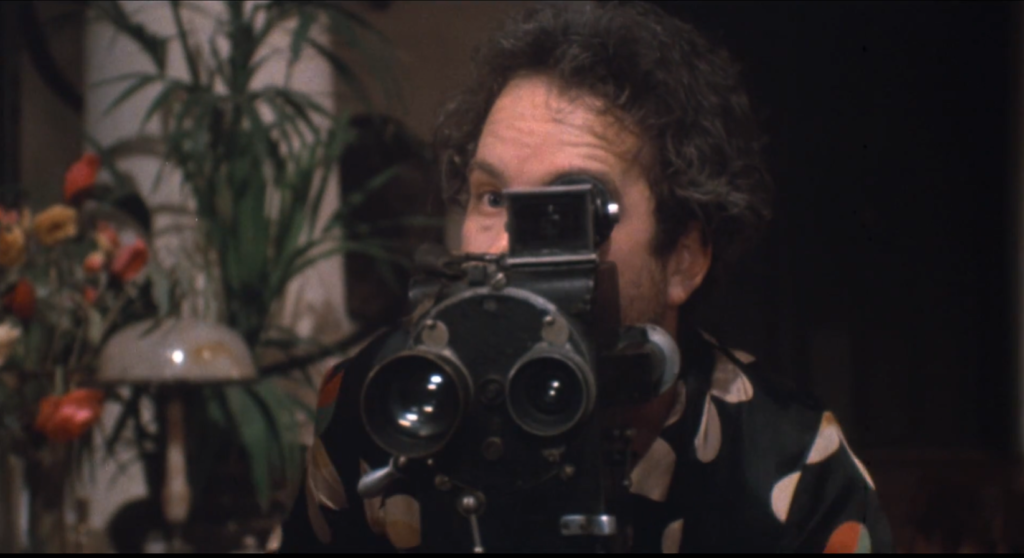Inserts (1975)
“Nothing simple, Miss Cake, is ever pure.”
|
Synopsis: |
|
Genres, Themes, Actors, and Directors:
Response to Peary’s Review: I’m largely in agreement with Peary’s points above — for its first hour, that is. While it took me a while to get used to the film’s markedly theatrical tone, I was fascinated by Byrum’s premise, and wanted to know more about these oddly believable characters. Playing an annoyingly voiced actress reduced to starring in stag films after the introduction of talkies, Cartwright (you’ll barely recognize her at first): gives an incredibly charismatic and fearless performance: we’re immediately intrigued by her relationship with Dreyfuss (also very good): and astonished by her willingness to play a role so aggressively sexual. At about the mid-way point, unfortunately, her character is no longer central to the screenplay, and Jessica Harper as “Cathy Cake” suddenly dominates the story — and it’s at this point that the artificiality of Byrum’s set-up is suddenly glaringly apparent. To cut to the chase, I’m astonished that neither Peary (nor any other critic I’ve read so far) points out how disturbingly skeletal Harper is (Peary simply calls her “great” in the role). This feature makes much more sense in her best-known role as a ballerina in Dario Argento’s Suspiria (1977), but is almost laughably inappropriate here. Her character — girlfriend of a producer (Bob Hoskins) 00 is desperate to play a role in Dreyfuss’s latest film (most specifically, to help out with his sexually explicit “inserts”) but this defies all common sense, given that she looks nothing like Cartwright. Naturally, women of all sizes and shapes might desire a role in porn films, yet her request here simply comes across as a plot device, one meant to lead us to the film’s revelatory denouement. I hate to focus on a woman’s appearance as a deal-breaker in her suitability for a role — but in this case, it put a serious damper on my ability to believe in (or pay attention to) what I was seeing. Redeeming Qualities and Moments: Must See? Links: |






2 thoughts on “Inserts (1975)”
A must, but *only* until Cartwright becomes “no longer central to the screenplay”. Her performance is very much worth a viewing – but once she is not there, neither is the film.
‘Inserts’ is a kind of schizophrenic film with one clear personality in its first half. The rest of the film seems to have no discernible personality at all. As a result, this oddball flick seems to have confused quite a few people. Not surprisingly, many don’t know what to make of it. It’s been called a couple of things which simply aren’t true: among them, “a comedy”, “misunderstood” and, according to its poster, a film “with dignity”.
One comment at IMDb reminds us that ‘Inserts’ was made at a time (the ’70s) when a renewed interest in the ’20s was ushered in; that is explained as a trend (several titles of the period are named) which was banking on the success of Jack Clayton’s remake of ‘The Great Gatsby’ – which bombed. It does make sense that someone out there saw potential for ‘Inserts’ to be the most controversial branch of that trend. The problem, however, was the undeveloped script.
From the second (the terrific) Cartwright arrives – almost at the start – ‘Inserts’ takes off like a house on fire. Along with the actress’ knockout turn, we not only get a lot of information about the underbelly of the Hollywood beast but we also get the basic ingredients for something smartly savage to wend its way through the script. Simply and sadly put, that never comes. It would be easy to say that ‘Inserts’ starts out as one film and becomes another. That’s just not the case. It starts out as one thing – and then doesn’t have the confidence for depth. If Byrum had really thought things through (had he, for example, not only kept Cartwright – his most interesting character – around but also brought the often-talked-about character of Clark Gable into the proceedings), the film may have found fireworks.
As it is, the film takes a real nosedive midway – with Dreyfuss, Harper and Hoskins all clawing their ways through pointlessness (and with the the first two valiantly and repeatedly reaching for subtext). It’s kind of amazing to realize that the writing in the first half is actually quite good; it’s then almost like watching a writer become either bored or obsessed with something that throws him off-track.
If ffs do watch the entire film, they may find it an interesting exercise in how to photograph a film taking place entirely inside one room (although their time would be better spent watching ‘Rope’ for the same reason). In a way, watching the first half – and nothing else – does give one the sense of having watched something complete in itself. But, once you’ve reached that point, save yourself and bail. Things become very tedious indeed!
⭐️⭐️⭐️⭐️
Brilliantly acted by all; this contains some of THE best performances it’s been my pleasure to see. I like the stagy, one location style; it could easily be done on the stage. Look for Bob Hoskins in an early role.